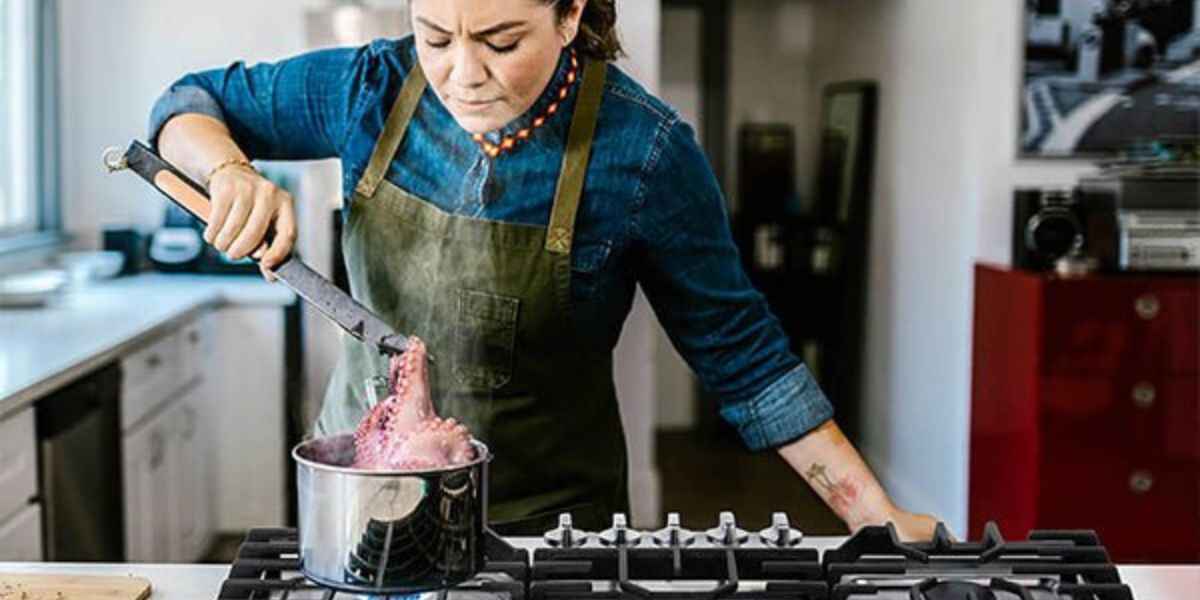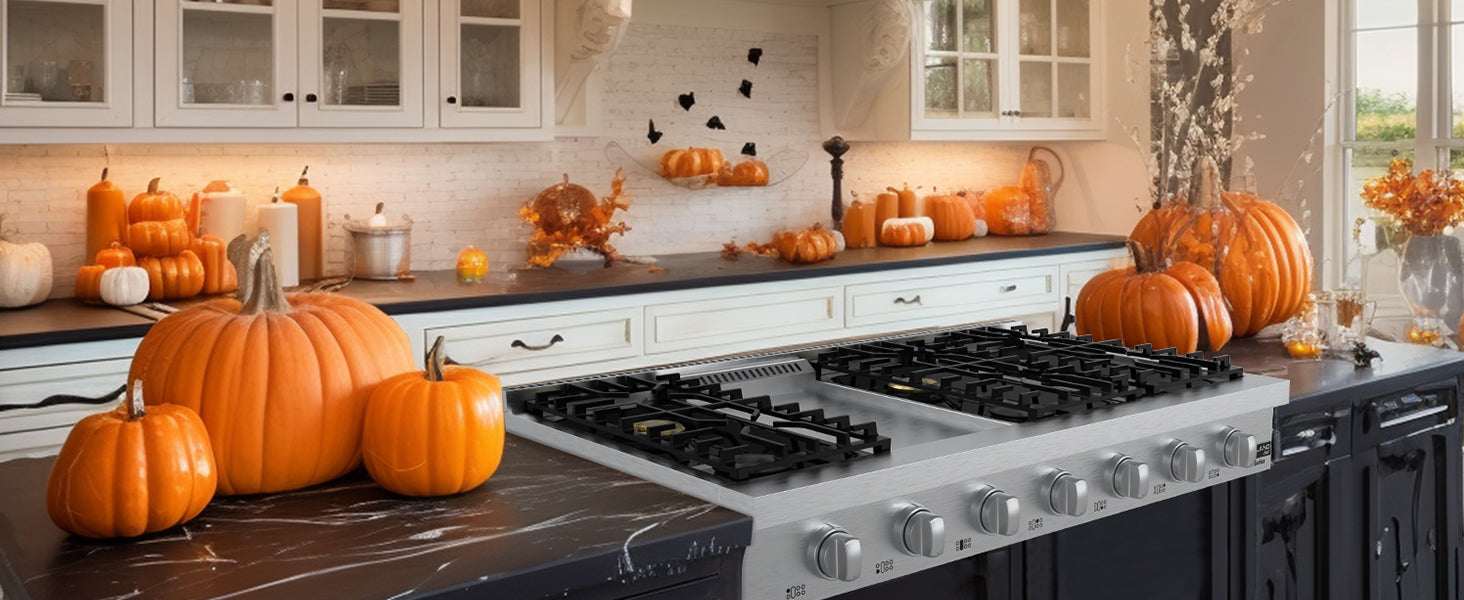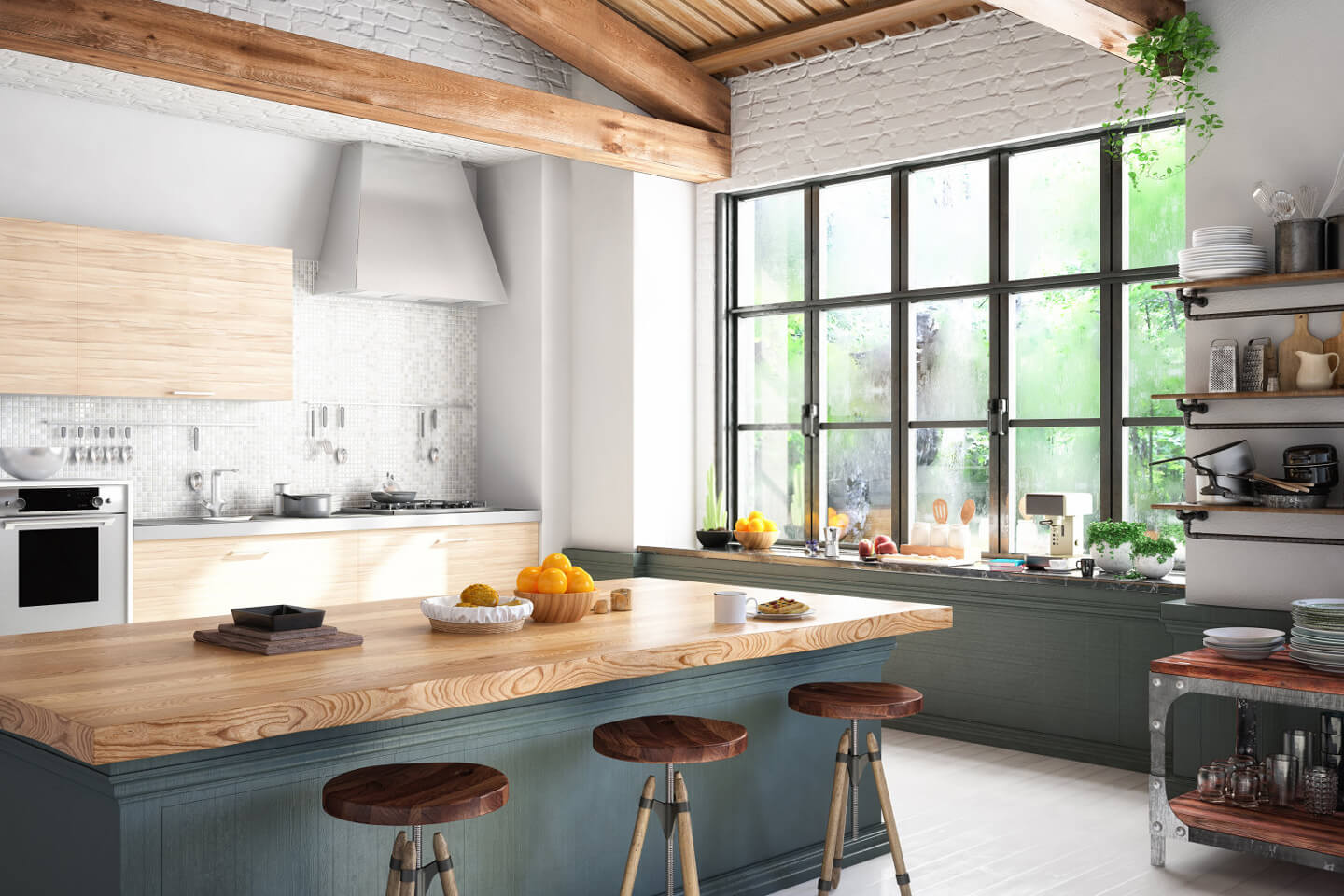-
With the right setup, a wok on a gas cooktop is fast, responsive, and ideal for crisp-tender results.
-
Choose tools that favor heat distribution and control—proper grates, a ring or stand, and a responsive burner.
-
Master flame control, preheat, sequencing, and ventilation to hit true searing temperatures without smoke overload.
-
If you want balanced power and finesse, explore GASLAND options designed for wok-friendly performance.
Can you use a wok on a gas cooktop?
Absolutely. Gas provides visible flame, immediate control, and the headroom required for high-heat wok cooking. Pair that with a responsive burner and a well-seasoned carbon steel wok, and you can achieve the quick evaporation and caramelization that produce wok-hei. Just remember that intense heat and oil atomization demand attention to kitchen ventilation for stir-fry and safe, uncluttered counter space.
Why gas works so well:
-
Open flame allows nuanced control and fast adjustments up or down.
-
Proper pan placement encourages efficient flame wrapping around the curved sides for quicker evaporation and browning.
-
Strong, continuous grates keep the pan stable while tossing.
Best gas cooktops for wok cooking
Not every appliance handles a round pan equally. The best gas cooktops for wok cooking offer a generous burner layout, sturdy grates, and a stable platform that still lets flames contact the pan walls. On a modern gas cooktop from GASLAND, look for:
-
A powerful burner that can reach high searing temperatures quickly, with consistent heat distribution across the bottom and lower walls.
-
Fine low-end control for delicate tasks (sauces, aromatics) without scorching.
-
Optional accessories or grate designs that support round-bottom wok tips—so the pan rests securely while still catching the flame.
If you prefer flat-bottom over round, you’ll gain contact area on typical grates, trading a bit of sidewall heating for easier stability.
How to stir-fry on gas stove
Technique beats brute force. Here’s a process you can use tonight:
-
Preheat the pan properly. Heat your wok until a droplet sizzles and skitters, then add oil. This prevents sticking and accelerates browning—core to authentic Asian cooking.
-
Sequence your ingredients. Aromatics first, then proteins, then vegetables by density. This mirrors restaurant timing and many stir-fry recipes.
-
Keep it moving. Toss and fold to prevent scorching while maintaining contact for color.
-
Finish fast. Sauce at the end; reduce briefly on high to glaze instead of stew.
Maintenance tips:
-
Build a slick surface with regular wok seasoning techniques on your carbon steel wok.
-
Dry immediately after washing; oil lightly to resist rust.
Tips for wok cooking at home
These practical cues help the home setup shine:
-
Vent early and often. Turn the hood on before you heat the pan; strong kitchen ventilation for stir-fry keeps smoke and moisture under control.
-
Work in small batches. Crowd the pan and you’ll steam, not sear.
-
Use high-smoke-point oils. They tolerate heat and deliver clean flavor.
-
Prep completes the dish. All ingredients cut and sauced before the flame goes on—stir-fry moves quickly.
-
Match burner and pan. Keep flames under the lower third of the wok—enough heat for color without waste.
Wok ring for gas cooktop
A wok ring for gas cooktop cradles a round-bottom pan so you get stability without smothering the flame pattern. Consider a perforated or open-frame wok burner stand that exposes the lower walls to heat for better browning. Rings are great for dedicated sessions; remove them when using flat cookware to keep pots level.

Adjusting flame for wok use
Fine control separates great stir-fry from smoky chaos. Adjusting flame for wok use means aligning the flame tips just at or slightly below the curve’s lower third. You want rapid vaporization and efficient flame wrapping—but if flames lick far up the sides, you’re wasting energy and risking scorched edges. For aromatics or sauces, briefly step down the flame to maintain sizzle without burning, then ramp back up to finish with gloss and snap.
Gear checklist (quick reference)
-
Wok type: 12–14" carbon steel wok (responsive, light, seasons beautifully).
-
Grate or accessory: Secure rest or ring that still exposes sidewalls.
-
Oil & tools: High-smoke-point oil, long chopsticks or spatula, heat-safe handle cover.
-
Ventilation: Hood that captures across the whole burner area; start it early.
-
Appliance choice: A wok-friendly gas cooktop from GASLAND with strong top-end output and stable low control.
FAQs
Q1: Flat-bottom or round-bottom?
Flat-bottom is easier on typical grates; round-bottom excels with a supportive ring and adequate flame contact for better sidewall heating.
Q2: Do I need restaurant-level heat?
No. Technique, sequencing, and dry ingredients matter as much as raw output. A solid home burner with good control delivers crisp results.
Q3: What oil should I use?
Neutral, high-smoke-point oils (peanut, refined canola). Flavor oils (sesame) come later as a finisher.
Q4: Why does my food steam?
Crowding, cold ingredients, or low heat. Cook in batches and re-preheat between rounds.
CTA
Ready to dial in your wok station? Tell me your space (24/30/36 in), fuel (NG/LP), and whether you prefer flat- or round-bottom. I’ll map your needs to a wok-friendly gas cooktop from GASLAND -balanced power, stable control, and the right accessories.
Keep reading: Inspire Connection: Creating Culinary Memories with GASLAND Cooktops — ideas to turn weeknight stir-fries into share-worthy moments.
👉 https://gaslandchef.com/blogs/news/inspire-connection-creating-culinary-memories-with-gasland-cooktops








